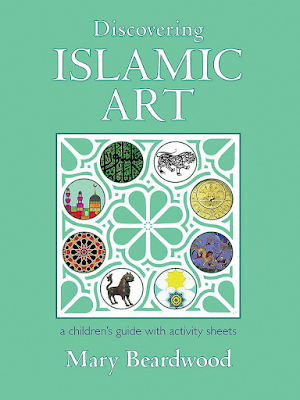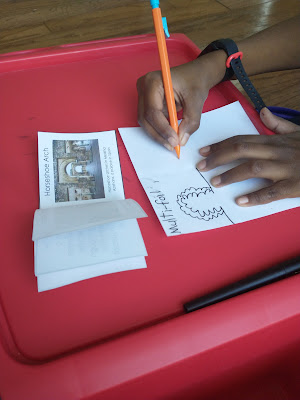During our Middle East study, we learned a lot about Islamic Art. As Muslims, we don't draw people, so much of our art consists of geometric shapes, patterns, and nature.
These are the two main books we used as references.
The first lesson we started with was learning about symmetry. The boys used pattern blocks to make designs and the others copied the design on the opposite side.
After the boys understood that Islamic Art is all about symmetry they got to work on making their own geometric patterns and designs.
We watched this short video
This study was part of our Iran country study and bridge lesson. Khaju Bridge in Isfahan, Iran has the most beautiful arches and ceramic tile art. The boys and I did a unit study on this bridge. If your interested you can grab this unit study from my TPT store. Click on the image below.



































